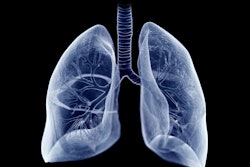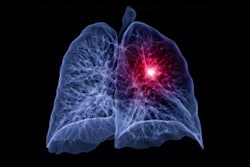A novel risk prediction model used in the Ontario Lung Cancer Screening Pilot increased the uptake of lung cancer screening among eligible Canadians, researchers have found.
A team led by Martin C. Tammemägi, PhD, of Brock University in St. Catharines, Ontario, reported that use of the model translated to an adherence rate to annual recall and early surveillance scans and clinical investigations of more than 85%. The findings were published April 19 in Nature Medicine.
Lung cancer is the leading cause of cancer death around the world, and research has shown that low-dose CT (LDCT) lung cancer screening of high-risk individuals can reduce lung cancer mortality by 20% or more, the group noted. Although lung cancer screening has been approved by major guidelines in the U.S. -- in fact, in 2021 the U.S. Preventive Services Task Force (USPSTF) expanded the pool of eligible individuals -- and more than 4,000 sites offer screening, uptake of lung screening outside the U.S. has been slow.
To address the problem, the Ontario Lung Cancer Screening Pilot was established, and between June 2017 and May 2019 its organizers recruited 7,768 people at high risk of lung cancer who were identified through the PLCOm2012noRace lung cancer risk prediction model -- a tool that Tammemägi developed with colleagues. Of the total pilot study cohort, 4,451 participants were screened, tracked, and offered follow-up, including appropriate treatment, according to the authors.
The team found the following:
- The pilot program’s lung cancer detection rate was 2.4% and of these, the proportion of early-stage cancers was 79.2%
- Sensitivity for lung cancer detection was 95.3% or more
- With abnormal scans defined as ones leading to further diagnostic workup, specificity was 95.5% and adherence to annual recall and early surveillance scans and clinical investigations was more than 85%
- Serious harms caused by the pilot program were infrequent
“The Ontario Lung Cancer Screening Pilot provides insights into how a risk-based organized lung screening program can be implemented in a large, diverse, populous geographic area within a universal healthcare system,” the researchers concluded.
The complete study can be found here.



















